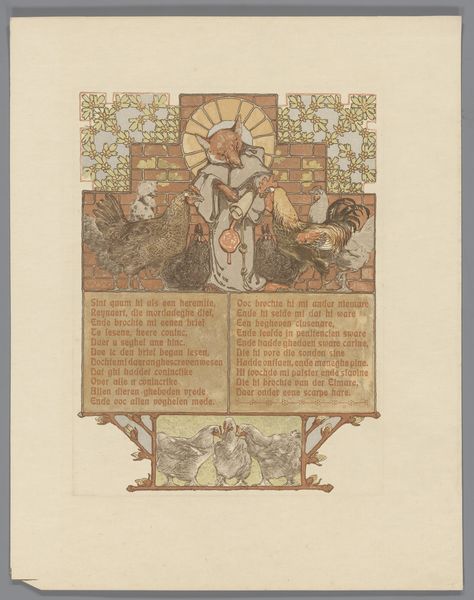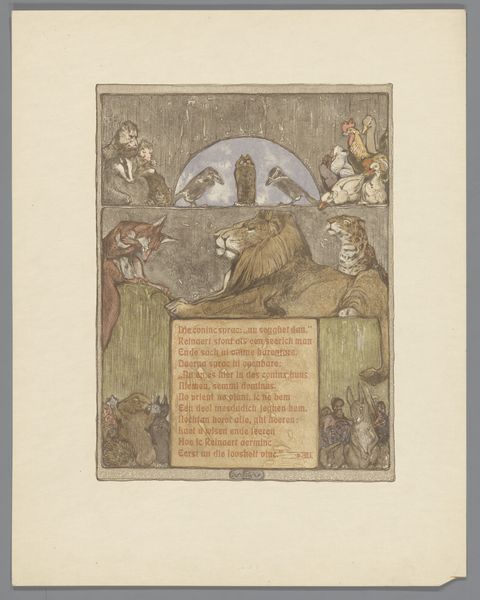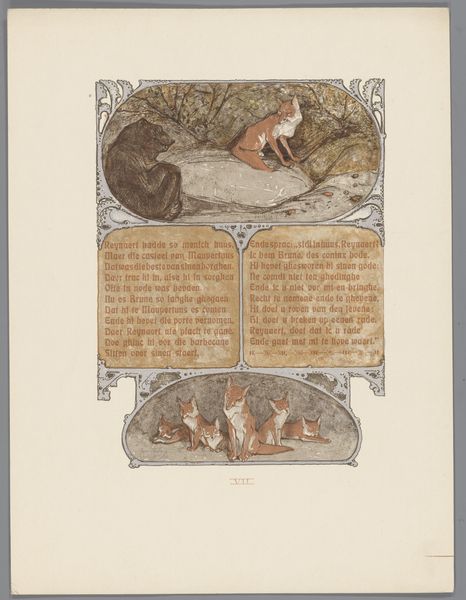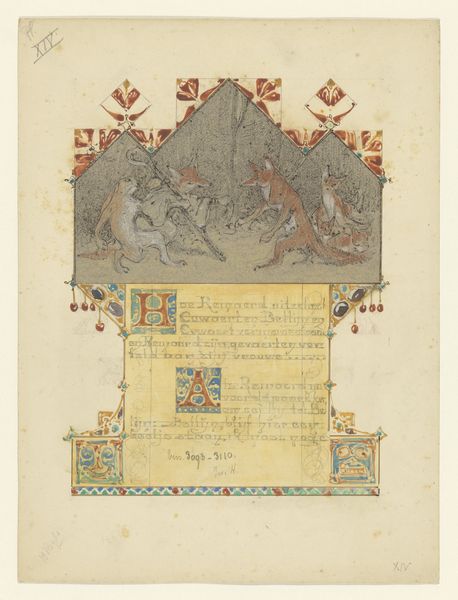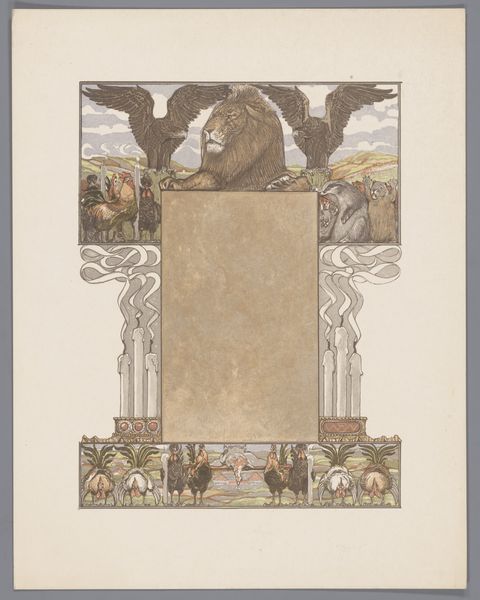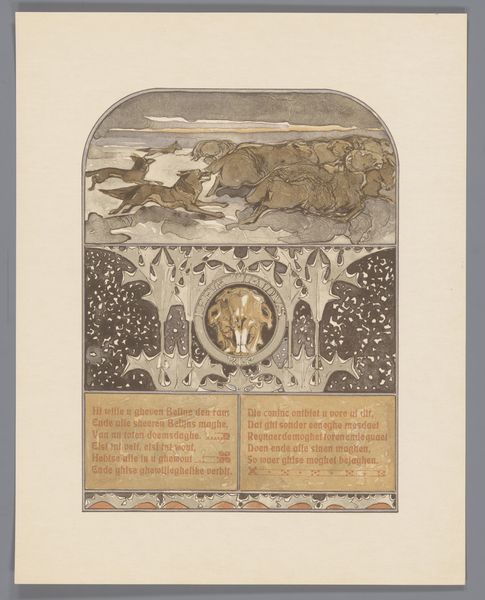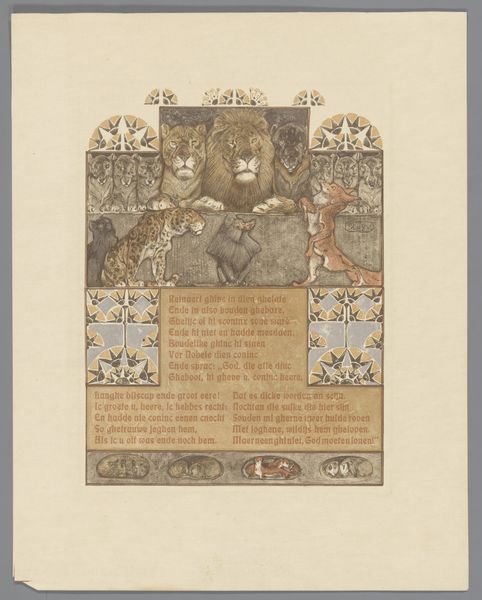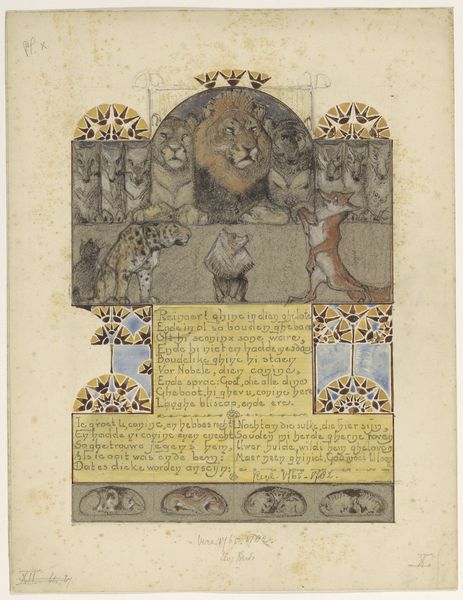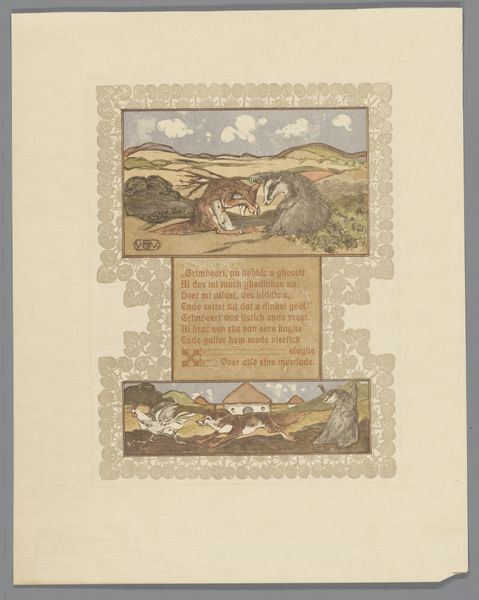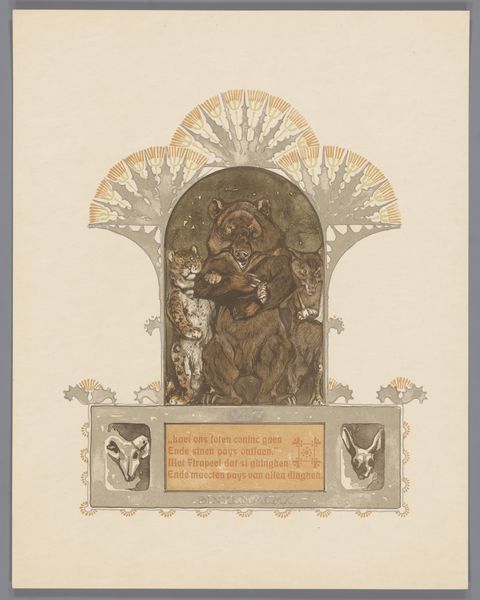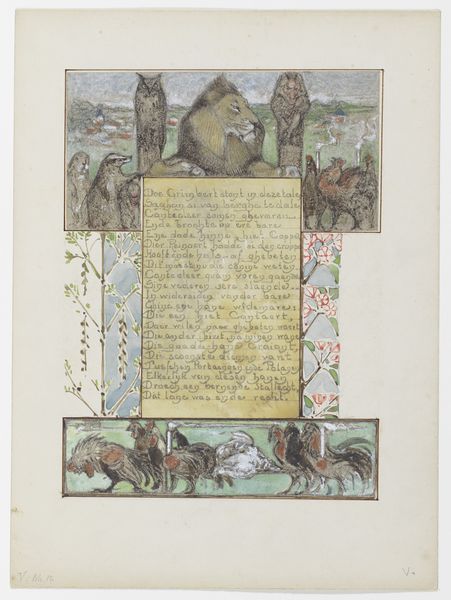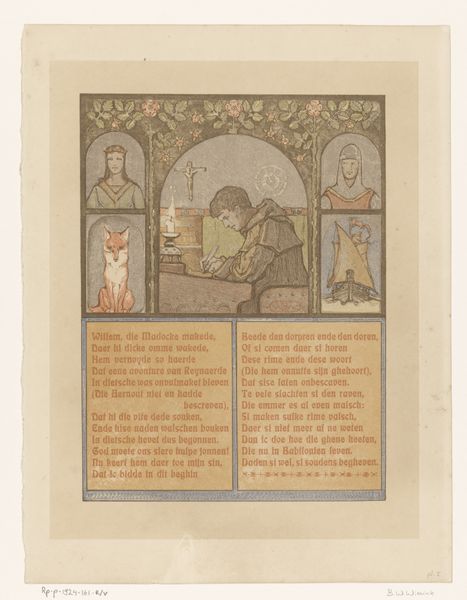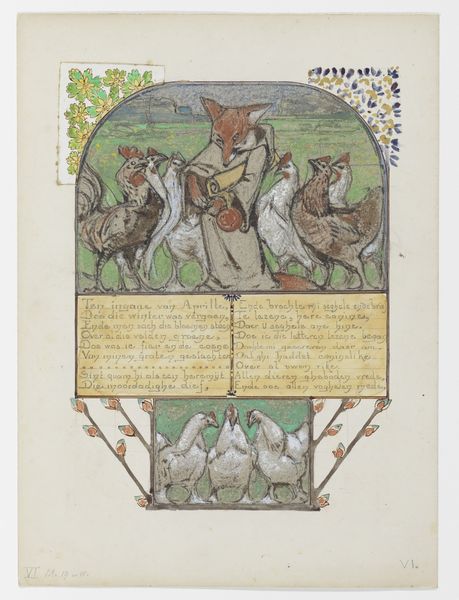
Vos (Reinaert), beer (Bruun), kat (Tybeert) en raaf (Tiecelijn) bij galg 1910
0:00
0:00
watercolor
#
water colours
#
watercolor
#
coloured pencil
#
folk-art
#
symbolism
#
watercolor
Dimensions: height 331 mm, width 260 mm
Copyright: Rijks Museum: Open Domain
Curator: This watercolor with colored pencil, created around 1910 by Bernard Willem Wierink, is called "Vos (Reinaert), beer (Bruun), kat (Tybeert) en raaf (Tiecelijn) bij galg," depicting a scene from the medieval tale of Reynard the Fox. The work is currently held in the Rijksmuseum. What are your initial thoughts? Editor: Dark humor meets intricate craft, it feels rather… grim! The composition immediately draws the eye to the characters at the gallows. You have the clear sense that their fate is being decided. The image feels handcrafted, carefully produced, judging from its visible strokes, which gives it an interesting weight. Curator: Yes, that tension between craftsmanship and dark subject matter is key here. Wierink situates this artwork within a visual and textual tradition; the borders framing the composition seem to echo the illuminated manuscript, while his characters and arrangement speak to themes of justice, retribution and medieval morality. But is that justice really served, or do those on high protect their own power by controlling production and display? Editor: The production process really stands out. The artist’s use of watercolor allows for a certain transparency, a vulnerability to seep through even as it depicts this brutality. One thinks about the pigments that were used at the time and where these materials originated: it reminds one that even colors, materials, are socially coded and imbricated in global flows of production. Curator: Absolutely. Thinking about that visual transparency is interesting. I consider how, given that these animal characters have become aligned to stand in for distinct human behaviors, it can lead us to further questioning of existing social categories and constructs, particularly for those of us at the margins. Editor: Wierink, in highlighting this allegorical animal execution scene, underscores, I think, how even the apparatus of justice can be corrupted. One notices the materials from which those gallows are built--crude construction for rough, unfair judgement. How can art, particularly depictions of violence, influence both consumption of materials and of justice in turn? Curator: So much to contemplate within this rich piece. It shows us that while history rhymes, sometimes that echo contains the screams of marginalized figures who had, have, little recourse to the systems above. Editor: Indeed. Examining these visual constructions, even of a seemingly fantastical tale, forces one to grapple with material histories and production of ideologies of our society.
Comments
No comments
Be the first to comment and join the conversation on the ultimate creative platform.
